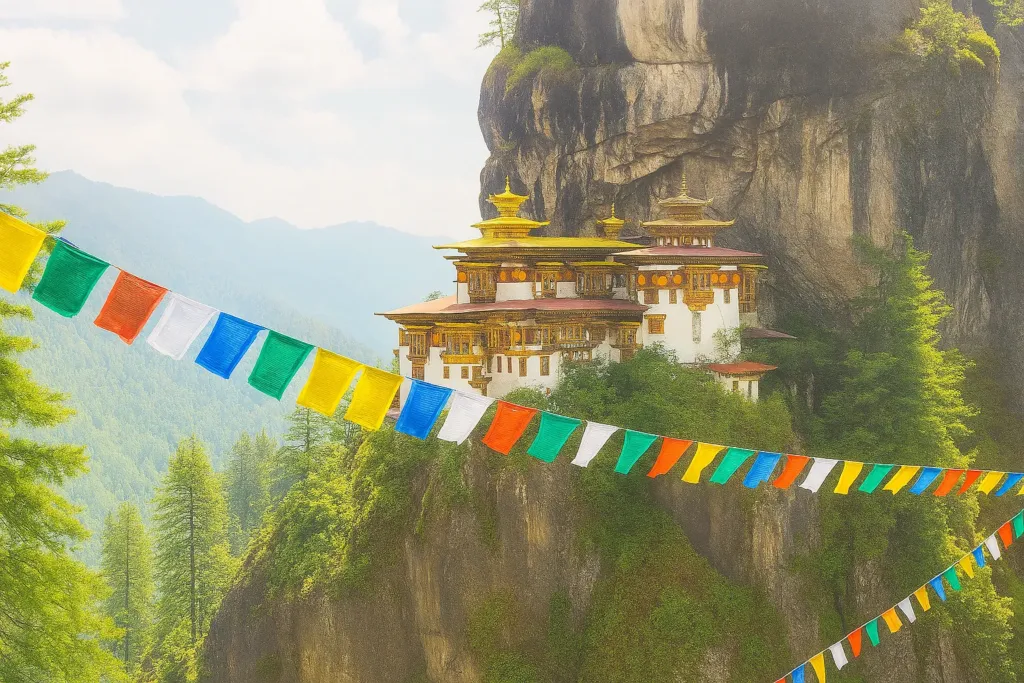The Gross National Happiness Index (GNH) was introduced in Bhutan in the 1970s by the fourth king Jigme Singye Wangchuck. His idea was that the true development of a country cannot be measured only by economic indicators. What matters more is how happy, healthy, and culturally connected people are, and how they live in harmony with nature. Bhutan became the first country in the world where happiness was officially recognized as a state goal. GNH includes four main pillars: sustainable development, cultural preservation, environmental protection, and good governance. To measure happiness, nine domains are used, including psychological well-being, health, education, time use, ecology, and community vitality.
For a long time Bhutan remained a closed country. Tourism was opened only in 1974, and from the very beginning the authorities decided to limit the flow of travelers. The system of “high value, low volume” was introduced: tourists must pay a fixed fee, which is on average about 200–250 US dollars per day. This amount includes accommodation, meals, transport, and a guide. This approach allows the government to control the number of tourists and at the same time support the economy without destroying nature and culture. GNH directly influences tourism policy. For example, the government restricts the construction of large hotels to preserve the traditional look of towns and villages. Mass advertising is banned, and television appeared only in 1999. All this helps to maintain the unique atmosphere of Bhutan, where travelers feel harmony with nature and culture. According to surveys, more than 90 percent of Bhutanese consider themselves happy. The average life expectancy in the country has grown from 43 years in the 1970s to more than 70 years today. Literacy levels have also increased significantly, and education and healthcare are available to all citizens.
Facts and figures
– In 1972 the king first declared that “happiness is more important than GDP.”
– In 2008 the Constitution of Bhutan established that the state must strive for the happiness of its people.
– The country has about 770000 inhabitants, and every few years a national happiness survey is conducted.
– More than 70 percent of the territory is covered by forests, and by law this figure cannot fall below 60 percent.
– Tourism provides a significant part of the income but is strictly regulated.
Stories
The history of Bhutan is closely connected with Buddhism. Many monasteries and shrines have become symbols of the country’s spiritual path. For example, the Taktsang Lhakhang monastery, known as the “Tiger’s Nest,” is considered one of the most sacred places. Legend says that Guru Rinpoche, who brought Buddhism to Bhutan, meditated here. Story is that in 2015 Bhutan became the first country in the world to fully switch to organic farming. This decision reflects the GNH philosophy: caring for people’s health and the environment is more important than short-term profit.
Tourist places connected with the topic
– Taktsang Lhakhang (Tiger’s Nest) – a monastery perched on a cliff at more than 3000 meters, symbol of spirituality and happiness.
– Thimphu – the capital of Bhutan, where visitors can explore the National Library, the Textile Museum, and see how traditions blend with modern life.
– Punakha Dzong – one of the most beautiful fortress-monasteries, where important state ceremonies take place.
– Paro Valley – a picturesque area with temples, villages, and rice terraces, where travelers can feel harmony with nature.
– Tsechu Festival – a colorful celebration with mask dances, reflecting the cultural richness of the country.
Bhutan is not just a travel destination but a unique experience. Here, visitors encounter a different philosophy of life, where happiness and harmony matter more than material wealth. The Gross National Happiness Index has become the country’s calling card and makes Bhutan a truly special place on the world map.
- Baikal facts
- Monaco
- Chukchi
- Traveling to Russia
- In the footsteps of Pinocchio: a journey through the wooden boy’s world
- Earth’s Extremes: The Most Inaccessible Tourist Destinations
- Bosphorus
- Uzbekistan
- Norway’s Atlantic Road scenic drive
- Ecuador
- How to Get Around Australia
- The Icelandic Sheep Dog
- Turtle facts
- Distant Storms Create Dangerous Surf at East Coast Beaches
- Belarus
- Born for battle: the world’s most warlike cultures
- Dangerous Beauty: World Regions with the Strongest and Most Treacherous Coastal Currents
- Cuba
- Georgia
- Sahalin











